Giochi dell'Oca e di percorso
(by Luigi Ciompi & Adrian Seville)
(by Luigi Ciompi & Adrian Seville)

|
Giochi dell'Oca e di percorso
(by Luigi Ciompi & Adrian Seville) |

|
 |

Torna alla ricerca giochi (back to game search) |
 |
| Mansion (The) of Bliss. A New Game for Amusement of Youth | ||
 |
Versione stampabile
 |
Invia una segnalazione

|
 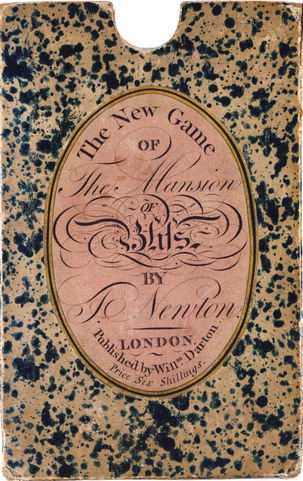 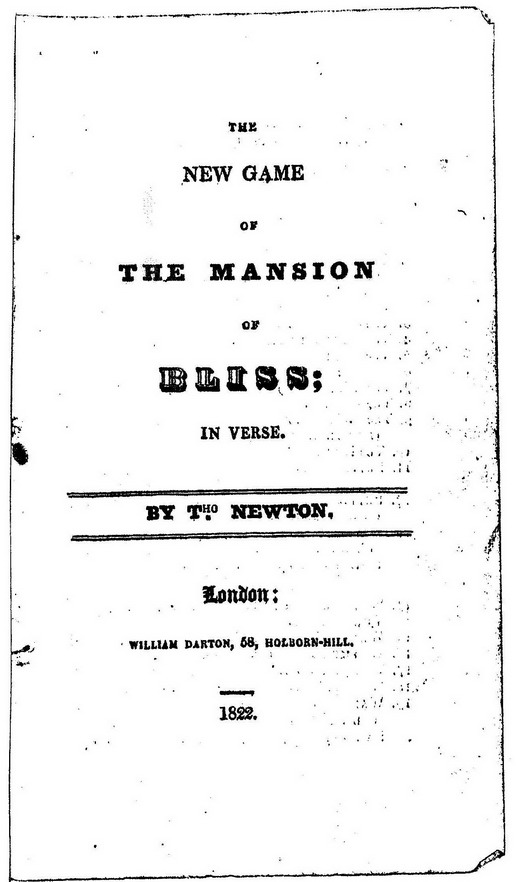 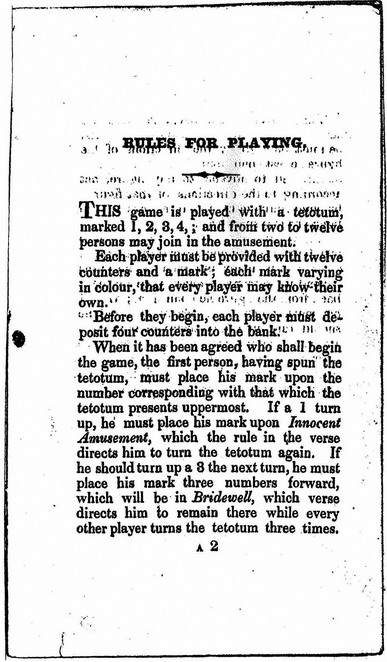 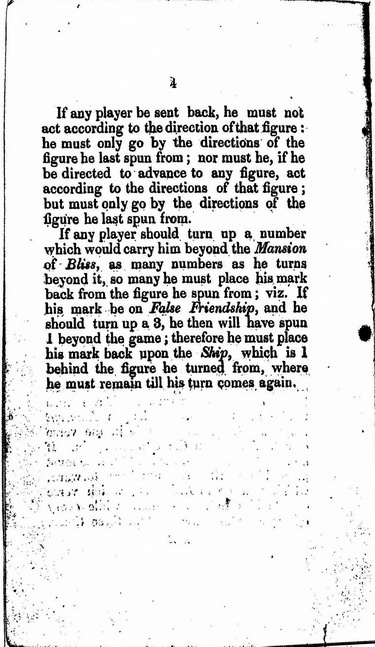 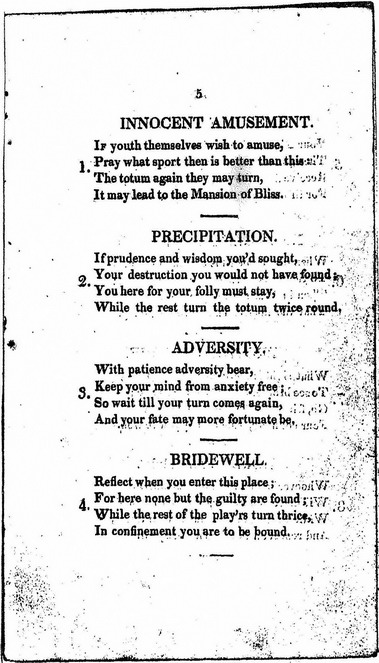 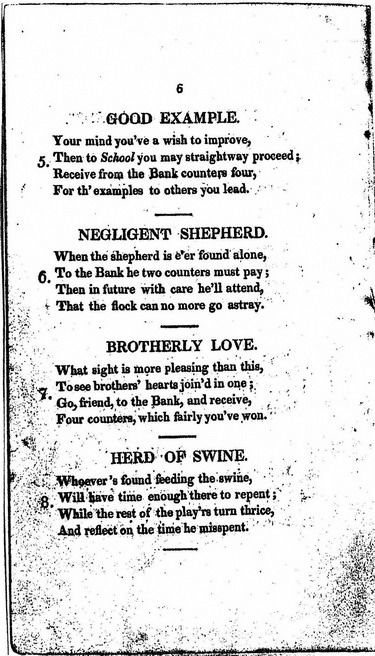 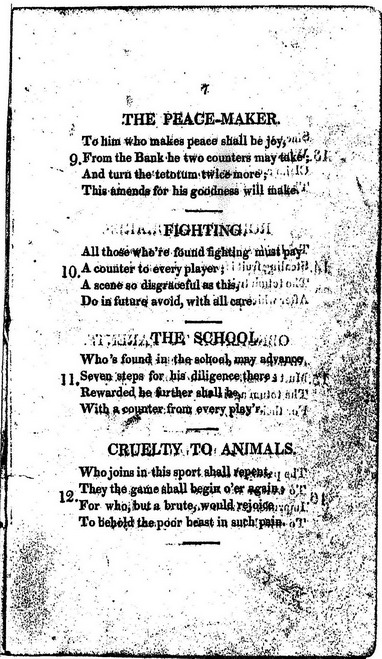  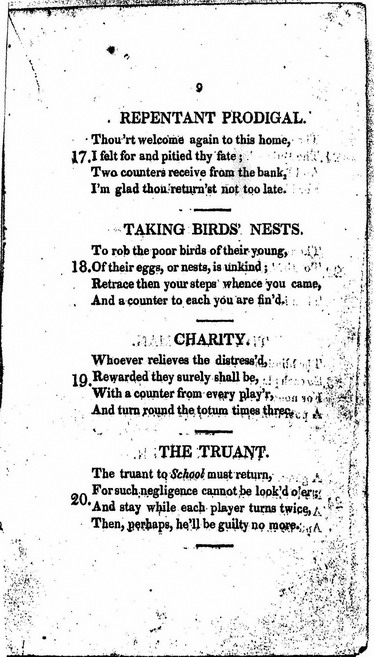 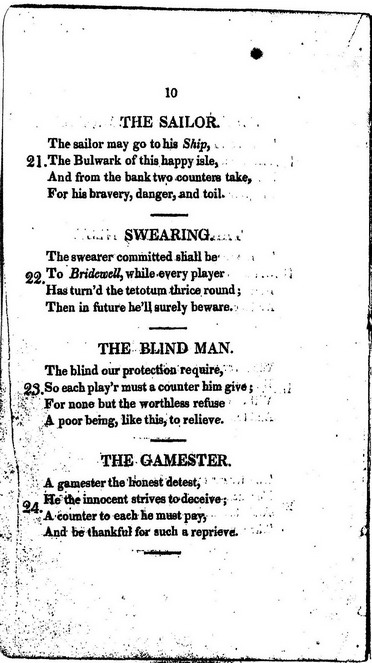 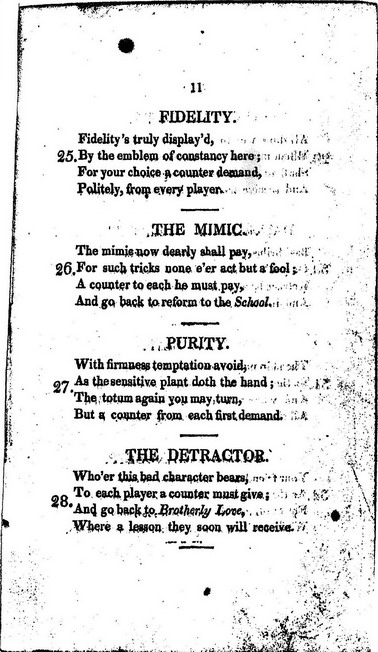 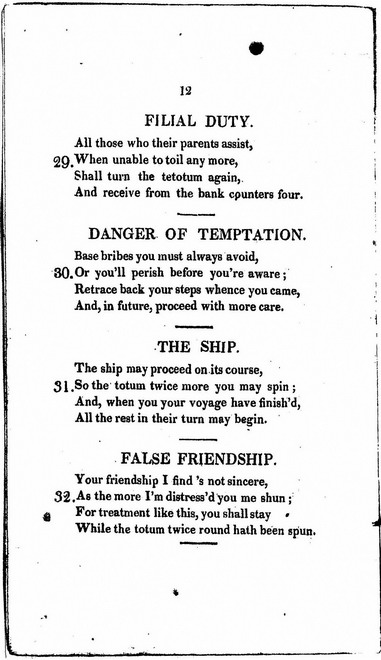 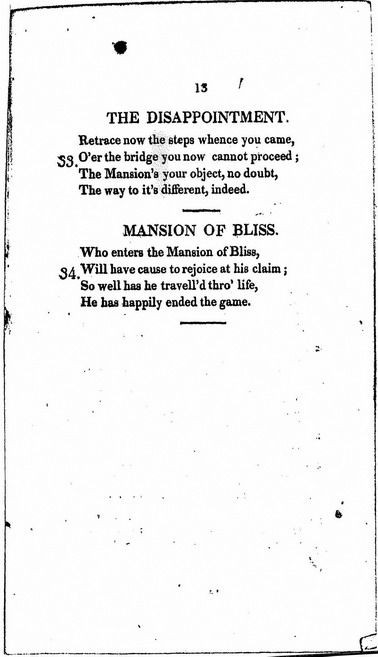   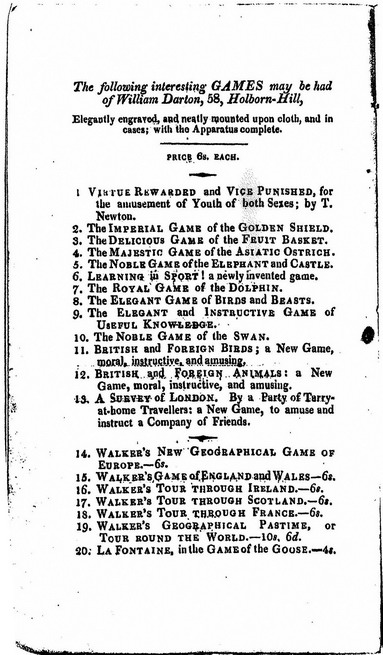  |
primo autore: | Non indicato |
| secondo autore: | Darton William | |
| anno: | 1822 | |
| luogo: |
Inghilterra-Londra |
|
| periodo: | XIX secolo (1°/4) | |
| percorso: | Percorso di 34 caselle numerate | |
| materiale: | carta incollata su tela (engraving on paper with linen backing) | |
| dimensioni: | 570X460 | |
| stampa: | Litografia colorata a mano (hand-coloured engraving) | |
| luogo acquisto: | ||
| data acquisto: | ||
| dimensioni confezione: | ||
| numero caselle: | 34 | |
| categoria: | Infanzia, educazione, pedagogia, favole e fiabe | |
| tipo di gioco: | Gioco di percorso | |
| editore: | Published by W. Darton, 58 Holborn Hill | |
| stampatore: | Published by W. Darton, 58 Holborn Hill | |
| proprietario: | Collezione A. Seville - E. C. | |
| autore delle foto: | A. Seville - E. C. | |
| numero di catalogo: | 68 | |
| descrizione: |
Gioco di 34 caselle, spirale (circolare), antiorario, centripeto REGOLE: non riportate sul tavoliere. CASELLE: mute. REFERENZA 1 The Mansion of Bliss, board game, William Darton, 1822. During the 18th and 19th centuries there was an explosion of board game publishing. These games were intended to be both educational and entertaining and were produced mainly for children. The major topics covered were history, geography, science, religion and moral values. The Mansion of Bliss is a typical example. It is a moral game "designed for the amusement of youth, with a view to promote the progressive improvement of the juvenile mind and to deter them from pursuing the dangerous paths of vice". The game is played with a teetotum (a spinning die) and accompanied by a booklet which gives a four line verse for each playing space. These outline the rewards or forfeits associated with that space. For example 'The Truant' and 'Cruelty to Animals' result in a forfeit, while 'Obedience to Parents' and 'Fidelity' are rewarded. The first player to reach 'The Mansion Of Bliss' in the centre is the winner. The publishers of board games are usually very well known as their details are printed on the games. The people who actually invented the games are not so well known. The inventor of The Mansion of Bliss was Thomas Newton who was also responsible for another moral race game called Virtue Rewarded and Vice Punished. REFERENZA 2 "Le second jeu de Thomas Newton, publié par William Darton en 1822, est "The Mansion of Bliss" (La maison de la félicité): C'est aussi une gravure à l'eau-forte peinte à la main, en 12 parties montée sur une toile. On y retrouve les bons et le mauvais cotés des caractères humains avec des références au monde entourant les joueurs, telles que la prison Bridewell, qui apparaissait aussi dans "La maison du bonheur" de George Fox. Il est interessant de noter que les règles du jeu sont écrites sous forme de quatrains. De meme que "Vertue récompensée et vice puni", "La maison de la félicité" était conçu pour l'amusement de la jeunesse, "avec le but de promouvoir l'amélioration progressive des jeunes esprits et de les dissuader de suivre les dangereuses voies du vice"." (GOODFELLOW Caroline) REFERENZA 3 "The second game invented by Thomas Newton and published by William Darton in 1822 is "The Mansion of Bliss". It is also a hand-coloured etching in 12 sections mounted on linen. This game illustrates good and bad human characteristics by such references to the world around the players as Bridwell Prison, which was also used in George Fox's "Mansion of Happiness". Interestingly, the rules for "The Mansion of Bliss" are written in four-line verse. Like "Virtue Rewarded and Vice Punished", "The Mansion of Bliss" was designed for the amusement of youth "with a view to promote the progressive improvement of the juvenile mind and to deter them from pursuing the dangerous paths of vice"." (GOODFELLOW Caroline) REFERENZA 4 "The Mansion of Bliss: A New Game for the Amusement of Youth", London: William Darton, 1822, 57 x 46 cm. (Yale University GV1199 .N4 1822). HOW TO PLAY THE GAME: Each numbered square has a corresponding moralizing rhyme for the players to read (in the accompanying booklet, not on view), with rewards and penalties noted. Players who land on square 20, for example, are Truants and must lose their turn twice: “The truant to School must return, / For such negligence cannot be look’d o’er; / And stay while each player turns twice, / Then, perhaps, he’ll be guilty no more.” The winner was the first player to reach the Mansion of Bliss at the center of the board. (Patrons) Exhibitions: - "Instruction and Delight: Children's Games from the Ellen and Arthur Liman Collection" (Yale Center for British Art, 17 January-23 May, 2019). |
|
| bibliografia: |
1) WHITEHAUSE, F.R.B.: "Table Games of Georgian and Victorian Days", London, Peter Garnett, 1951 (pag. 25). 2) GOODFELLOW, Caroline: "A Collector's Guide to Games and Puzzles". Secaucus, New Jersey, Chartwell Books-London, Quintet Publishing Limited 1991. 3) GOODFELLOW, Caroline: "The Development of the English Board Game, 1770-1850", in Board Games Studies 1, 1998. 4) GOODFELLOW, Caroline: "Jeux de société. Le guide du collectionneur des jeux de société depuis le XVIIIe siècle jusqu’à nos jours", (Edizione francese) Carrousel MS, 2001. 5) SEVILLE, Adrian: "The sociable Game of the Goose" in "Board Games Studies Colloquia XI", 23-26 Aprile 2008, Lisbona - Portogallo 2008. 6) ANDREWS, Jeanmarie: "Early Board Games.The Game of Education." In: "Early American Life". Volume 48, Christmas. Ohio November 2-5, 2017. 2017. 7) LIMAN, Ellen: "Georgian and Victorian Board Games: The Liman Collection", Pointed Leaf Press, 2017 (pages 21, 22, 44-45). 8) NORCIA, Megan A.: "Gaming Empire in Children's British Board Games, 1836-1860". Studies in Childhood, 1700 to the Present. Routledge, 2019. |
|
| "The Development of the English Board Game, 1770-1850" (Caroline G. Goodfellow) | ||
| Games of Moral Improvement. "Table Games of Georgian and Victorian Days". (Francis Reginald Beaman, Whitehause) | ||
Vai alla ricerca giochi Vai all'elenco autori